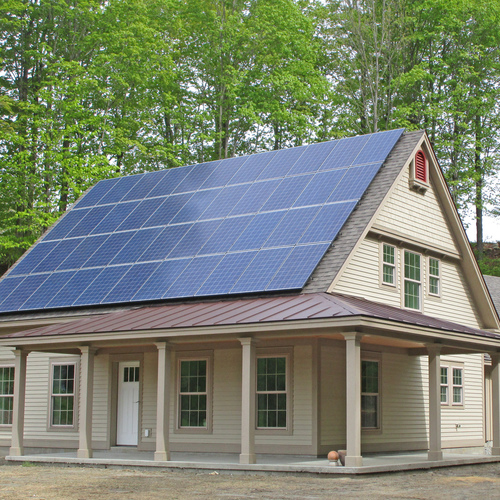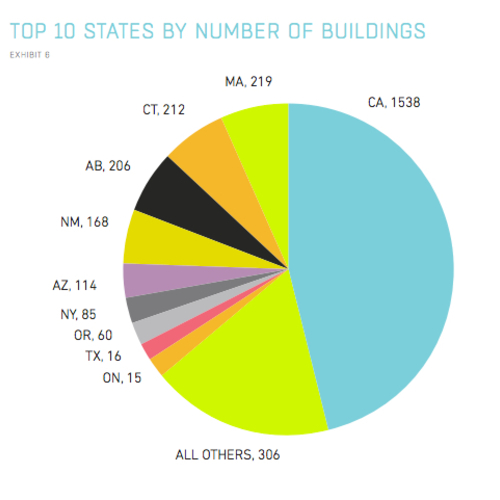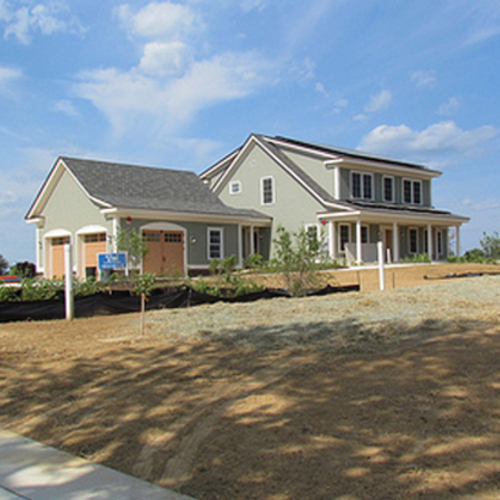
Image Credit: NIST
An experimental house in Gaithersburg, Maryland, built by the National Institute of Standards and Technology (NIST) completed its first year of operation July 1 with a surplus of electricity. The house is equipped with a 10.2-kW photovoltaic (PV) array.
According to the government agency, which completed the 2,700-square-foot house last year, the surplus amounted to 491 kWh of electricity, which a NIST news release said was enough to power an electric car for 1,440 miles.
“We made it — and by a convincing margin,” said Hunter Fanney, who heads the project.
Occupied by a “virtual family”
GreenBuildingAdvisor has published several articles about the NIST test house, including:
- Testing… Testing… Homes as Net-Zero Laboratories,
- Is NIST Serious About Net-Zero-Energy Homes? and
- Experimental House on Track for Net-Zero Operation.
The four-bedroom, three-bathroom house is jammed with hundreds of sensors, but it isn’t occupied by people. Instead, researchers are using sophisticated equipment to mimic the behavior of a family of four (nicknamed the “Nisters”). The object is to test materials and systems that increase energy efficiency.
A NIST spokesman said the cost of the project was $2.9 million, but he added that because it was built as a “research testbed,” construction costs were higher than they would have been for a similar house in the Washington, D.C., suburbs. NIST is planning to release a report later detailing the cost of building a comparable net-zero house that meets Maryland codes.
As to the future of the experimental house, Fanney said in a prepared statement:
“The residential facility will become a testbed for developing measurement systems and protocols to measure the performance of the residence overall and its associated equipment, including new and experimental technologies, under actual field conditions, which will lead to improved test methods and standards. Research at the facility also will provide real world data that will be used to validate and improve computer models to predict the energy performance of homes.”
Weekly Newsletter
Get building science and energy efficiency advice, plus special offers, in your inbox.















3 Comments
Alternative story title
An alternative story title could be: Government confirms that large solar array makes a large amount of power
... and it costs ...
... considering government investment, professional, academic and admin time to design, build and operate, and the capital costs of the mechanicals and construction ... and amortized mortgage over 25 years ... about $1.5 million ...
Gotta spend money to save money.
Family of four with four bedrooms/three baths???
Why can't we build houses that people can afford?
The two of us rattle around in 1000 sq ft with 1 1/2 baths. Every second weekend we have four Grandchildren visit and we are still fine with the three bedrooms. At those times it would be nice to have 2 full bathrooms, but we muddle through. When we moved in we had two adult children and we were fine.
Our power bill will go up to $118 a month after the October, 2014, 2% increase. $34 of that is attachment costs and taxes. Can't put much of a PV system up for that, but I believe every NEW house should be built to a high standard with some PV. It is the only sensible thing to do.
Log in or create an account to post a comment.
Sign up Log in